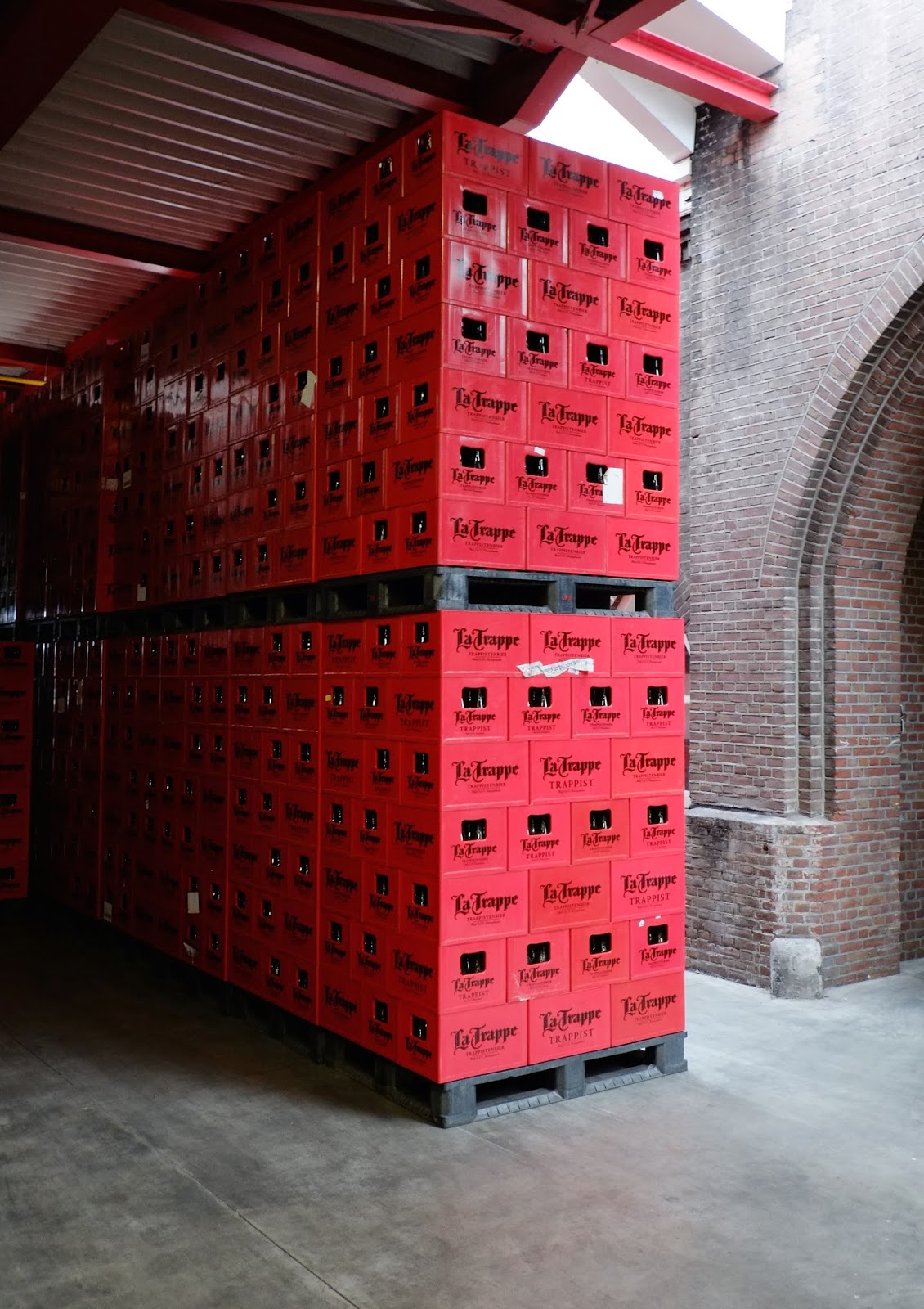Another beautiful Spring weekend in Brussels, so we decided to knock off the last two Trappist Monasteries that are open to the public, Achel and La Trappe.
Achel is the smallest of the Trappist producers and they make only two beers, a Blond and a Bruin. The Achel Bruin is probably my favorite beer next to Westvleteren and is my go to at our local pub. At the Abbey, it is possible to get the beers from the tap (van ‘t vat). This makes them lower in alcohol because they have not undergone a second fermentation in the bottle. The barrel beers are lighter and much less complex than their bottled version, which is probably why I was almost finished mine before remembering to take a photo.
The Achel monastery is not really set up for tourism. There is a small cafe where you can get the beers and snack, which seemed quite popular with local cyclists. Sitting directly on the border with the Netherlands, they also have a more extensive beer shop where they offer many other Belgian beers as well as the Abbey produced cheese. This too seemed quite popular. Overall though, the monastery is probably the least touristy of the ones available to the public. I am glad we made the time for it nonetheless as it was good to visit the home of one of my favorite beers.
La Trappe was next on the list. We arrived in time for a later lunch of a meat and cheese board paired with a couple of their beers. SWMBO went for the Blond, while I had a Bockbier followed by the Isid’or. The Bockbier is a very dark beer using chocolate malt and has rich notes of coffee, bitter chocolate and some hop. The Isid’or is named after a monk that used to brew at the monastery and is a lovely reddish Amber color with toffee flavors and light hop. Both were excellent and would rate a solid three and half Drunk Monks. Following the tour we also had the opportunity to try their Jubilaris beer. This was made to celebrate the 25th Anniverary of the Abbott of their Abbey and is very close to running out. This beer is a a bit darker than their Dubbel and has a stronger hop flavor but with a sweetness and maltiness that was quite nice as the afternoon cooled off. I would give it 4 Drunk Monks.
La Trappe is the only Trappist Beer producing monastery in the Netherlands. By Contrast to Achel, these monks bring their marketing A-game. They have a huge cafe where you can sample all of the beers including some very limited edition beers. They do quite a nice tour with a very enthusiastic tour guide and a surprisingly interesting movie about monastic life and beer. They also have the most well developed gift shop with all of the beers, breads, cheeses and chocolates produced by the monastery. They even sell monk-made bitterballen. (http://en.wikipedia.org/wiki/Bitterballen)
We recently had a conversation with the editor of Belgian Beer & Food Magazine (http://www.belgianbeerandfood.com) about the fact that the brewers, Trappist and otherwise, could do so much more with tourism if they wanted. Beer culture in the US has been booming for the last decade, with the awareness of Belgian beers really beginning to expand. The same can be said for the UK and some of the surrounding European countries as well. With the compact nature of the country, it would be possible to set up three or four really nice regional tours that could also feature some of the wonderful food from this country. I sincerely hope that Paul and his colleagues can help make that happen.
Following the tours, we made our way back to Brussels. We arrived home late and were pretty hungry so we headed to our local pub for dinner. As I sat down, our publican arrived with my glass Achel Bruin.



























